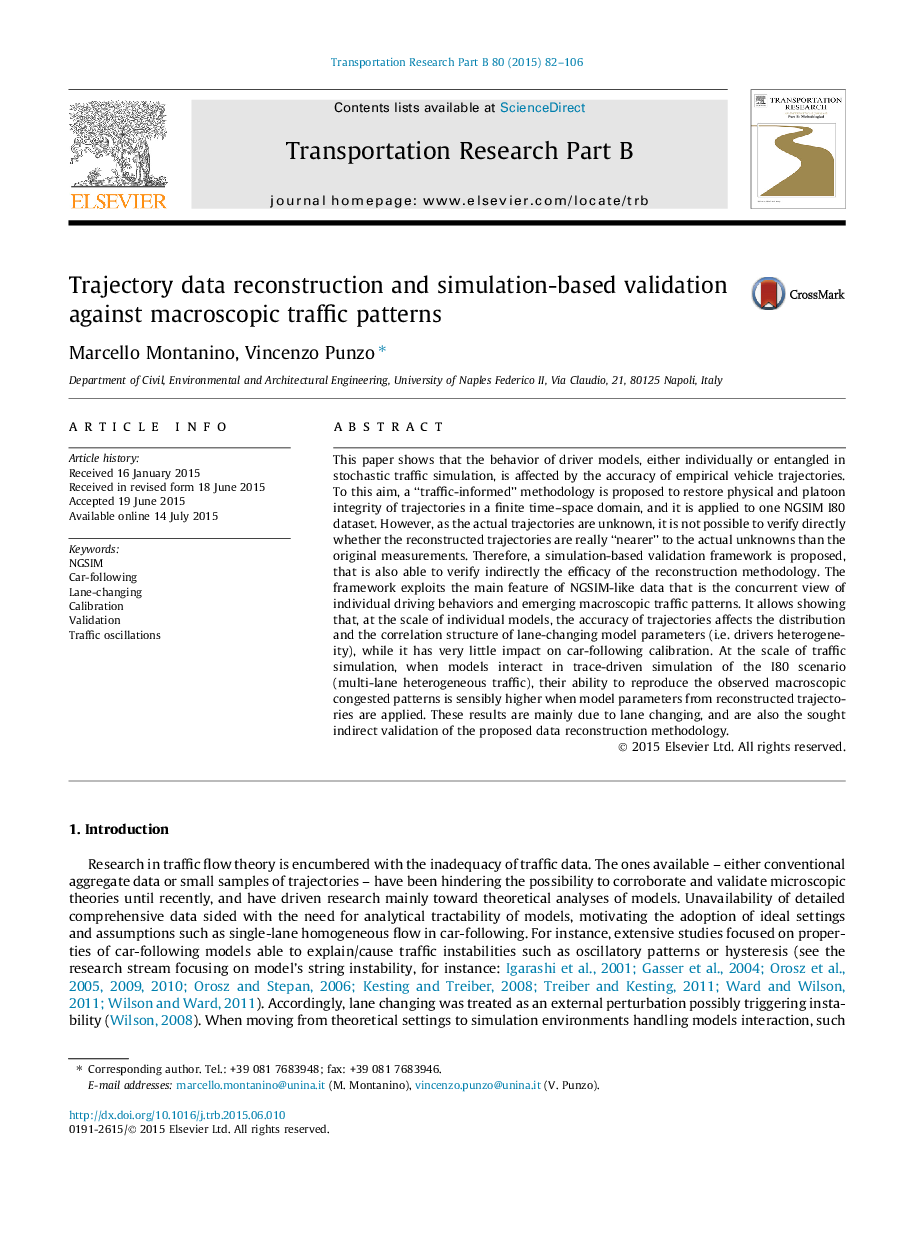| Article ID | Journal | Published Year | Pages | File Type |
|---|---|---|---|---|
| 1131712 | Transportation Research Part B: Methodological | 2015 | 25 Pages |
•Behavior of driver models is affected by the accuracy of empirical vehicle trajectories.•We provide a traffic-informed methodology to restore physical and platoon integrity of trajectories.•We provide a validation framework for models at both the levels of vehicle trajectory and emerging macroscopic traffic patterns.•Trajectory accuracy affects heterogeneity of lane-changing behaviors, while it has very little impact on car-following.•Lane-changing model parameters alone alter the reproducibility of observed congested traffic patterns.
This paper shows that the behavior of driver models, either individually or entangled in stochastic traffic simulation, is affected by the accuracy of empirical vehicle trajectories. To this aim, a “traffic-informed” methodology is proposed to restore physical and platoon integrity of trajectories in a finite time–space domain, and it is applied to one NGSIM I80 dataset. However, as the actual trajectories are unknown, it is not possible to verify directly whether the reconstructed trajectories are really “nearer” to the actual unknowns than the original measurements. Therefore, a simulation-based validation framework is proposed, that is also able to verify indirectly the efficacy of the reconstruction methodology. The framework exploits the main feature of NGSIM-like data that is the concurrent view of individual driving behaviors and emerging macroscopic traffic patterns. It allows showing that, at the scale of individual models, the accuracy of trajectories affects the distribution and the correlation structure of lane-changing model parameters (i.e. drivers heterogeneity), while it has very little impact on car-following calibration. At the scale of traffic simulation, when models interact in trace-driven simulation of the I80 scenario (multi-lane heterogeneous traffic), their ability to reproduce the observed macroscopic congested patterns is sensibly higher when model parameters from reconstructed trajectories are applied. These results are mainly due to lane changing, and are also the sought indirect validation of the proposed data reconstruction methodology.
